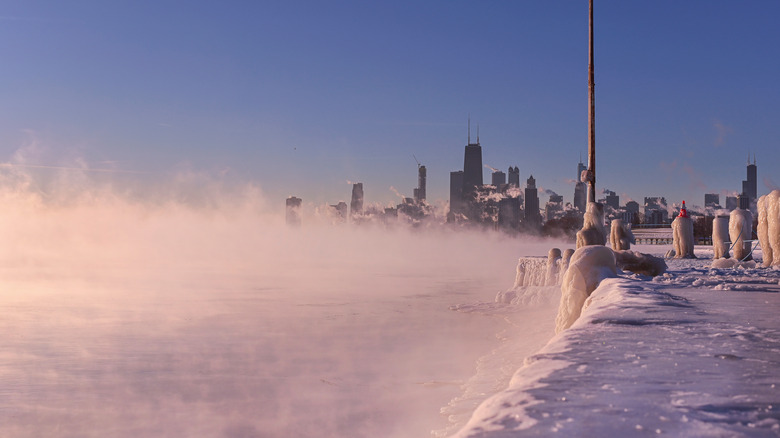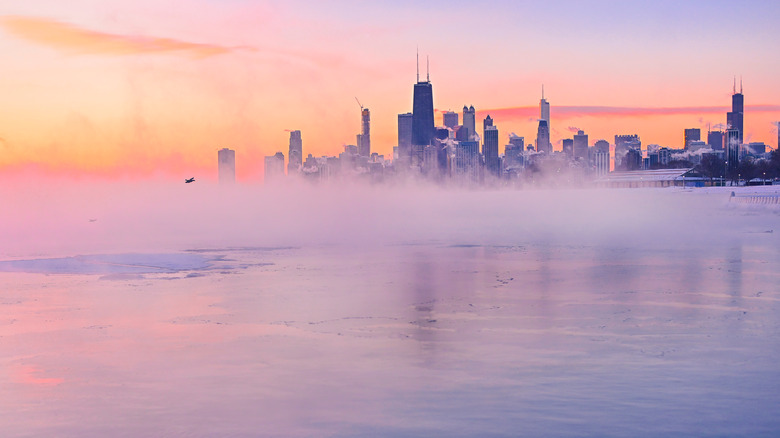What Does It Mean When There's A Polar Vortex?
A polar vortex might sound like a portal you cross to the upside-down in a winter episode of "Stranger Things," but it is a real-life weather phenomenon. According to Mental Floss, a polar vortex is pretty much just a frozen hurricane hovering the South and North Poles simultaneously.
While winter weather advisers sometimes speak of an encroaching polar vortex as if it is about to hit us in the same way a snowstorm might, WDRB reports that such language is somewhat misleading. Indeed, the vortex, a swirling low-pressure area of frosty air, is almost always present at the poles. When it is stable, it keeps the cold area restricted to the regions where it belongs, namely the North and South Poles.
The polar vortex is also responsible for keeping the jet stream in line. This is the air that circles the globe through the troposphere (via EarthSky). When the vortex is healthy, that air moves in a pretty straight line. If the polar vortex breaks or expands, then we're in for some pretty freaky weather.
When the polar vortex breaks, it sends an arctic chill across the country
If the polar vortex were to really hit us like a hurricane, it would be one monster of a storm. Whirring counterclockwise with intense frosty air and looming as high as 31 miles above planet Earth (via Mental Floss), the polar vortex is quite the force to be reckoned with. Fortunately, the vortex itself never leaves its position at the poles, but sometimes pieces of it do break off and send an arctic chill across the country.
When this happens, all sorts of almost supernaturally cold weather can occur. Some examples include frozen sharks washing ashore and sunny southern Alabama seeing single-digit temperatures. According to Climate, the polar vortex can "break" in a wide variety of ways. It can split into lobes, slide off the pole, wobble, slow down, or even reverse to a clockwise rotational direction. While the sudden stratospheric upheaval of the polar vortex is a weather phenomenon still not fully understood, historically, the vortex always manages to pull itself back together.

